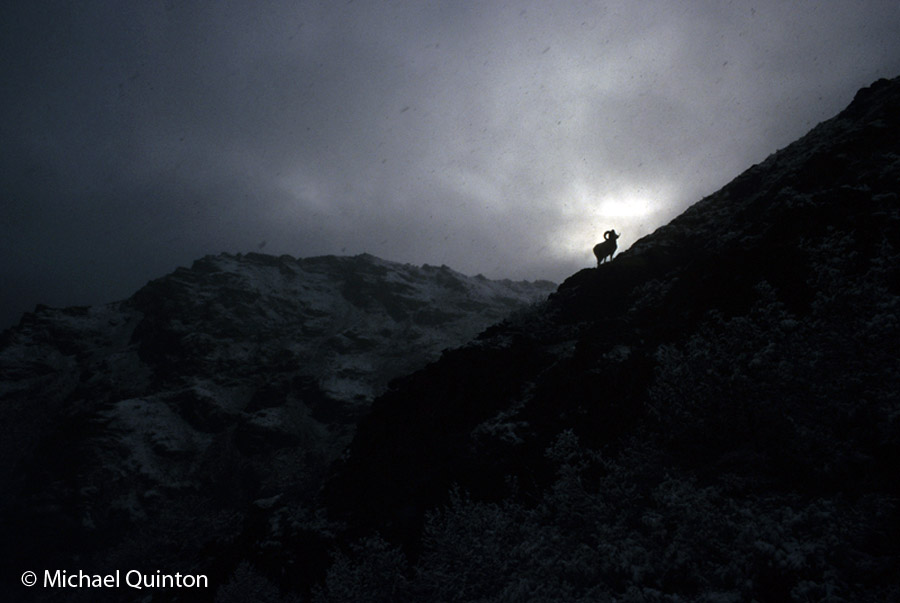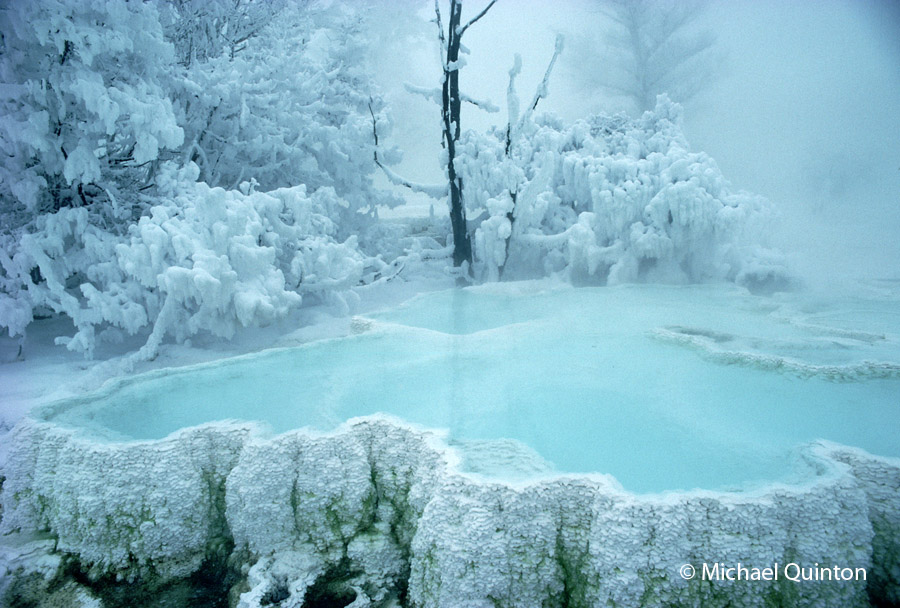 Spectacular Wrangell Mountains in Alaska seem insignificant in this ineffective wide-angle photograph.
Spectacular Wrangell Mountains in Alaska seem insignificant in this ineffective wide-angle photograph.
I remember my own fascination with the wide-angle lens. My first was a 24mm. The wide view had great appeal to me. It was thrilling to look at the landscape thru my lens. I could fit entire mountain ranges onto my tiny Kodachrome slide! And there lies the problem. A wide-angle lens often includes too much information with detail that is too small.
We expect the camera to record what we see. But, the fact is, we humans see things quite differently than any camera. Humans see their subject subjectively. We concentrate on our subject and don’t notice much else, missing details that we should be paying close attention to.
The camera records everything within the viewfinder, it sees objectively. Right down to all those distracting details we failed to notice.
In contrast, when we look at a mountain range or desert, we see the mountains, the terrain, we feel the wind, we get dust in our eye, we feel the cold or hot, We smell the pines or the sagebrush and the delicate fragrance of wildflowers as our gaze dances from flower to flower and bounce along with a foraging bumble bee.
We use all of our senses to see. Our eyes jump around, quickly focusing through a sequence of images. Images of details. Our impression of the majestic mountains is really a series of close-up images combined with sound, smell, etc. So as you edit mountain panoramas shot with a wide-angle lens, do you ask yourself where did the majestic mountain wilderness panorama, I remember seeing, vanish to? Landscape photographers who see, reach for a telephoto nine times out of ten.
Landscape photography provides us with an ideal subject to help us understand the different ways of seeing. For one thing your subject isn’t going to jump up and high-tail it out of here. So you have time to give proper attention to all the steps of making the best possible photograph. And working with landscapes helps build a solid foundation of visual communication skills.
To be effective a wide-angle photograph needs to be simple and have a strong center of interest that commands the eye. Caution!, the foreground is a favorite place for image clutter, those distracting elements, to hide.
 A dall ram silhouetted against a bright spot of sky commands the eye.
A dall ram silhouetted against a bright spot of sky commands the eye.
 Winter landscape in Yellowstone National Park has no distracting elements.
Winter landscape in Yellowstone National Park has no distracting elements.
